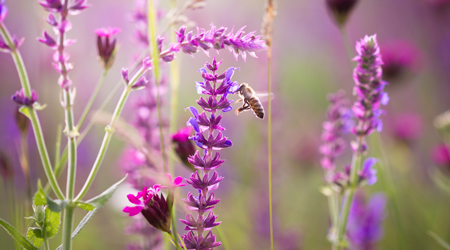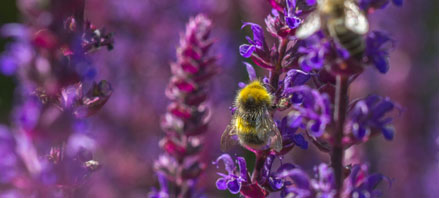Blooms for Bees
For many, watching a bumblebee at work around a garden is a highlight of the spring and summer seasons. But UK populations of this charismatic insect are in decline, with two species becoming extinct in the last 70 years. This is largely due to changes in agricultural practices, resulting in the loss of flower-rich habitats.
Fortunately gardens and allotments are important habitats for bumblebees. Thanks to support from the Heritage Lottery Fund, researchers here at Coventry University are working to improve gardening recommendations to support bumblebees, by deepening our understanding of which flowers are bumblebee favourites, and exploring possible bumblebee-friendly bedding plants.

Experts in our Centre for Agroecology, Water and Resilience are working with charities to study which bumblebee species visit gardens and allotments, and which flowers are most attractive to them. The team is harnessing the power of citizen science and is engaging gardeners and lovers of bees from across the country to help generate a national picture of our bumblebees’ habits.
Using the free project app, people are being encouraged to monitor the flowering plants in their gardens and allotments and submit photos of the bumblebees that they see. Data from the research will be shared with the National Biodiversity Network, giving other organisations around the UK valuable insight into UK bumblebee populations.
Coventry University’s own grounds team have replaced traditional bedding in its green spaces in favour of wildlife friendly alternatives, creating a thriving and award-winning urban oasis that is home to at least 18 species of bee. This year they are joining the Blooms for Bees project, trialling dahlias as bee-friendly bedding.






